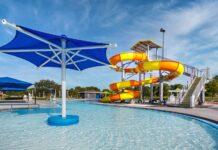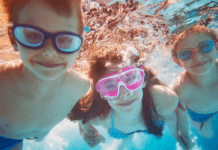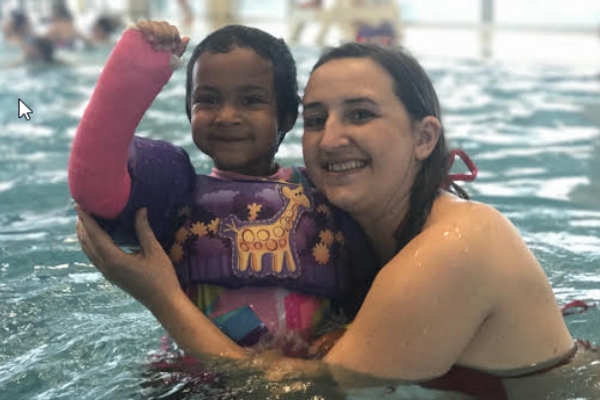
During an evening dance party my 3-year-old slipped while jumping off the fire place and broke her arm. I knew from the first scream that something was wrong, and at first glance I immediately knew her arm was broken.
I urgently shouted for my husband who darted into the room. I could feel the deformity on her arm as I curled myself around her, calmly offering whatever reassurance I could. Inside I was freaking out! All my years of nursing did not prepare me for this mom experience.
The 20-minute drive to the ER was scary. My nurse mind was racing thinking of the interventions to come, possibly surgery. The road had never felt so bumpy, and it was clear she was in pain. After what seemed like the longest car ride ever, we arrived. It was clear by X-ray the break was bad, but there was relief in discovering at this age surgery would not be necessary.
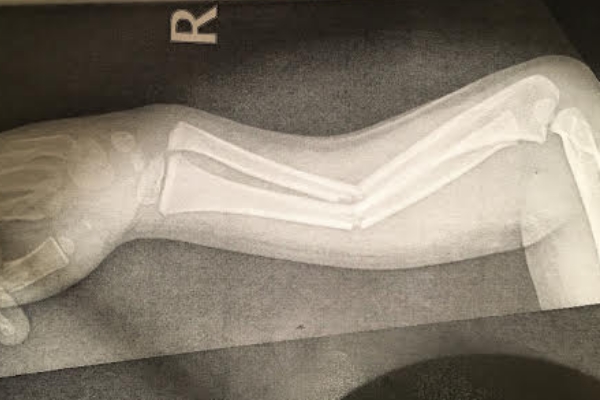
The amazing team in the emergency room provided a light sedation, straightened (reduced) the arm, and placed a “soft” splint that was hard and stable while also allowing for swelling. After two long weeks of being a helicopter mom a hard cast was placed for an additional 4 weeks, followed by a removable plastic splint for 2-4 week. And the rumors are true:
Water-proof casts do exist!
- Great for maintaining good hygiene and hand washing
- Water proof casts are completely submersible, appropriate for showers, baths and swimming.
- Water proof casts are not appropriate if your child as had surgery on the bone or if the bone has punctured the skin.
- Ask the doctor if this is an option for your child!
- Insurance did not cover the waterproof portion of the cast, we paid an additional $30 out of pocket.
Tips:
- Instead of bathing at bedtime we cleaned up in the morning or early afternoon. This gave the cast time to drain and dry out while moving and playing.
- During the bath, we did not add bubbles or products to the bath. Reserving all the shampooing and cleaning until the end.
- We provided a clean water rinse after baths and swimming.
- We avoided lake water or ocean water…being Kansans ocean water was easy to avoid.
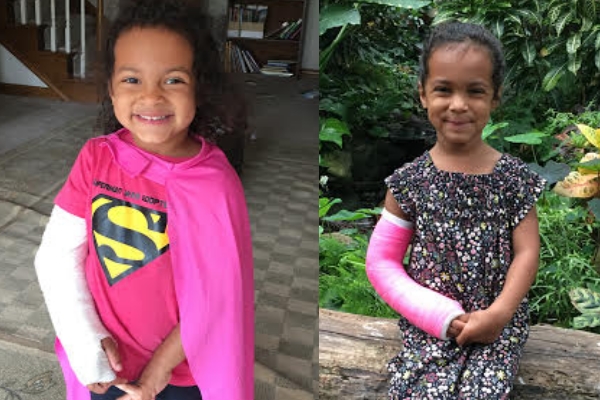
Lessons Learned:
- When the injury happens try to stay calm. Affirm your child’s feelings. “Yes darling, I bet this really hurts. We will help it feel better.” “It’s okay to cry.” and “I’m here for you.”
- Prepare for needing to help with daily cares. We planned additional time to assist with dressing, bathroom breaks and her car seat.
- Use age appropriate interventions. Simple things like affirming her feelings, adding a sticker to the cast or providing an ice pack for itchiness can help little ones.
- We discussed what she would expect at certain doctors appointments. Videos of other children getting their casts placed and removed normalized these appointments.
- The healing process is gradual and once the cast is off she needed to build strength in that limb. We became creative with play, reminding her to use her right hand, and rewarded moments she was doing great.
Kids are adaptable, shockingly so at times. She started eating and writing her name with her left hand, while sometimes using her feet to assist in clever ways. She left me in the dust cringing and gasping, while she effortlessly moved forward. Locklyn, you impress me everyday!








